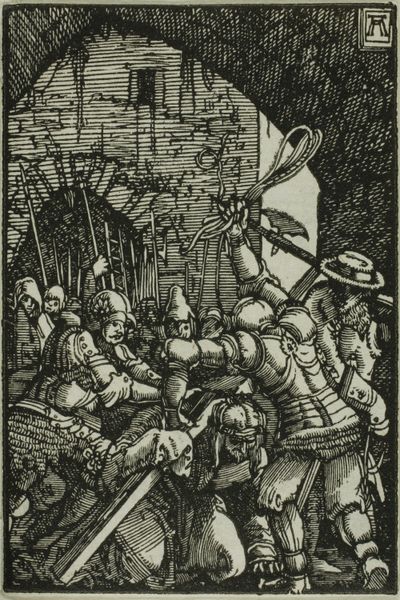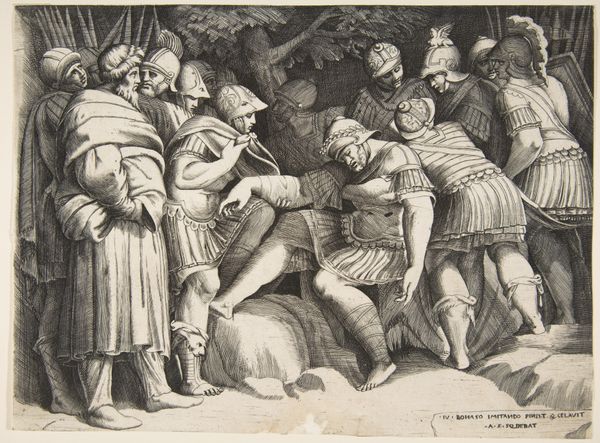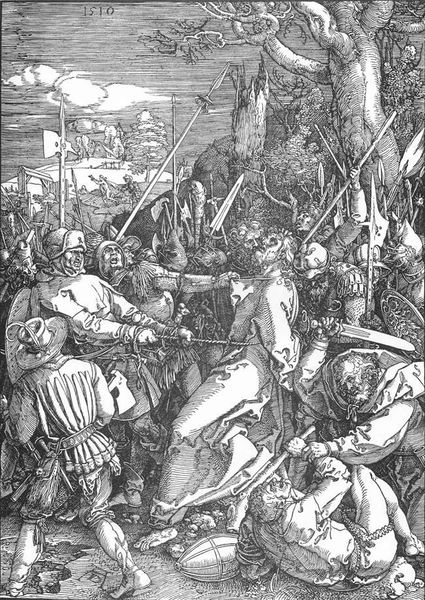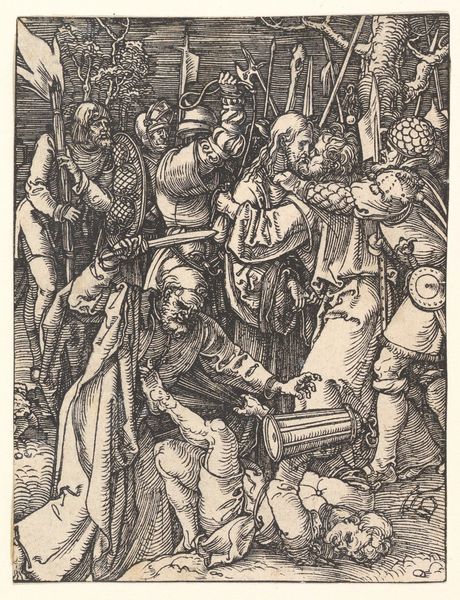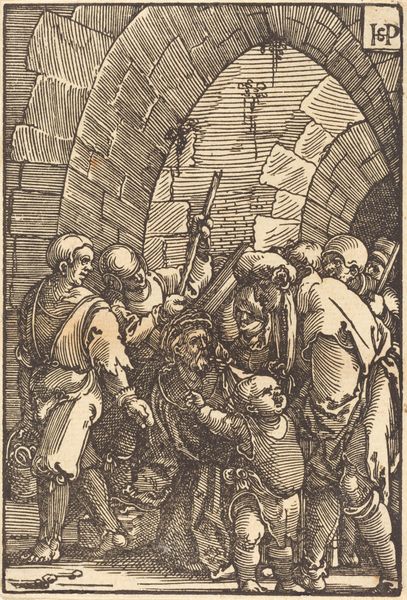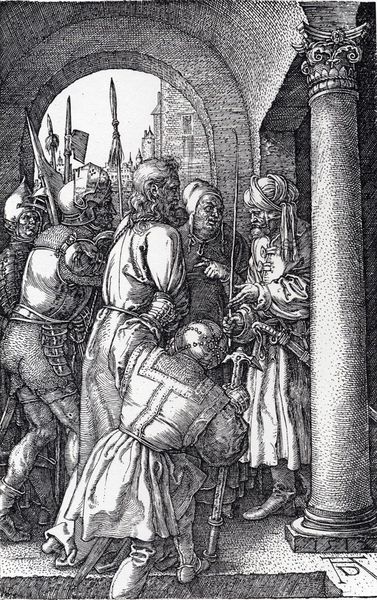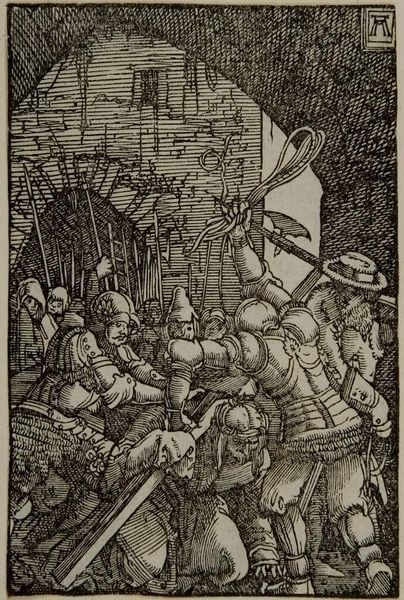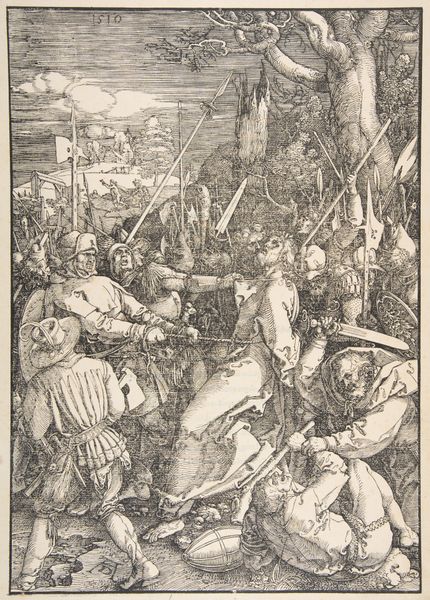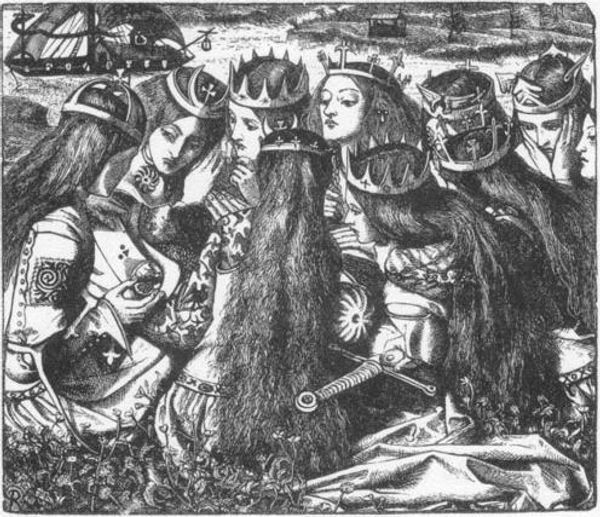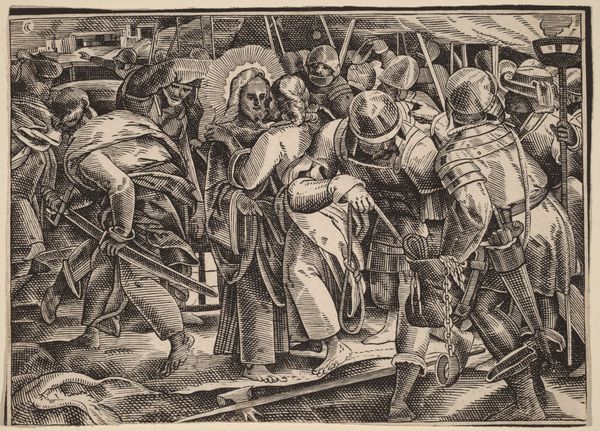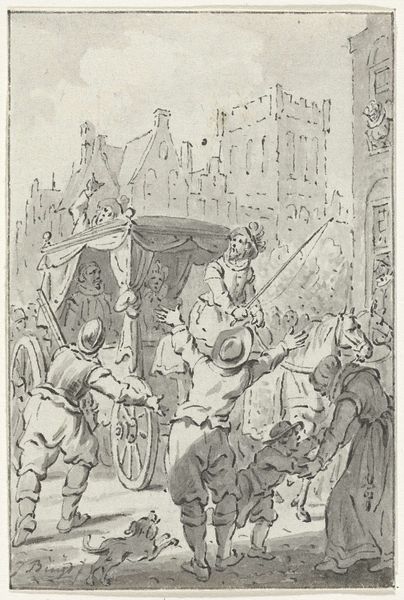
Copyright: Public domain
Editor: Looking at this detail from Hieronymus Bosch’s "Haywain," painted around 1516 with oil, what strikes me is how utterly bizarre the characters are! What narrative or social commentary do you believe Bosch is presenting here? Curator: It's certainly a chaotic and unsettling scene, isn't it? Bosch operated within a culture steeped in religious allegory and societal critique. This "Haywain," now residing in the Prado, speaks volumes about the Northern Renaissance perception of humanity's fall from grace, our obsession with worldly goods leading us to hell. Editor: Hell? It feels so... performative somehow. The people seem to be scrambling for hay. What would you say is the social and institutional influence on this work? Curator: Consider the commissioning patrons – likely wealthy merchants or religious figures. They lived in a society where the Church wielded immense power. Bosch's art served, in part, as a cautionary tale but it did far more, providing an opportunity for the patrons and viewers to reaffirm shared values of good and evil. The hay, representing worldly possessions, becomes a focal point for illustrating this mad rush, reflecting a concern about moral decay prevalent in that period. He used recognizable and sometimes exaggerated images from everyday life, imbuing them with moral and spiritual significance that was further reinforced with religious beliefs, public morality plays, sermons, and visual and performative rituals in the Netherlands. Editor: It sounds like art as both expression and a moralizing experience at the same time! I’ll need to reflect more about how public expectations and consumption shaped such fantastical art. Curator: Precisely! It's fascinating to see how socio-political context and shared societal beliefs influenced even the most imaginative artistic creations.
Comments
No comments
Be the first to comment and join the conversation on the ultimate creative platform.
